How to Grow and Care for Command Performance Peony
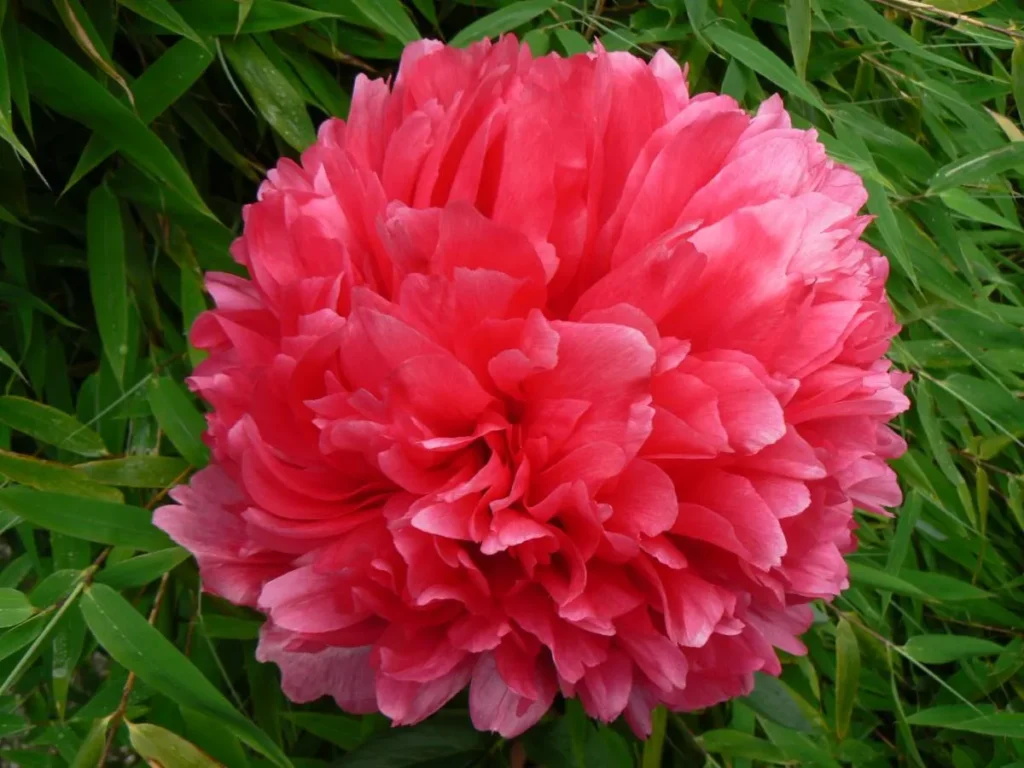
Command Performance Peony, a stunning and highly sought-after variety of peony, is celebrated for its large, vibrant blooms and captivating fragrance. This herbaceous perennial, scientifically known as Paeonia lactiflora, is a favorite among gardeners and flower enthusiasts due to its striking appearance and relatively easy care requirements. Originating from Asia, particularly China, these peonies have made a significant impact on gardens worldwide.
Understanding Command Performance Peony

Origin and Natural Habitat
Command Performance Peony traces its roots back to the rich, fertile soils of China. These peonies thrive in temperate climates and are accustomed to regions with cold winters and warm summers. Understanding their natural habitat provides crucial insights into creating an ideal growing environment in your garden.
Unique Characteristics
What sets the Command Performance Peony apart are its remarkable blooms. Each flower can reach up to 8 inches in diameter, showcasing a brilliant red hue that fades to a soft pink as it matures. The flowers are not only visually appealing but also emit a sweet, captivating fragrance that enhances the overall garden experience.
Planting Command Performance Peony
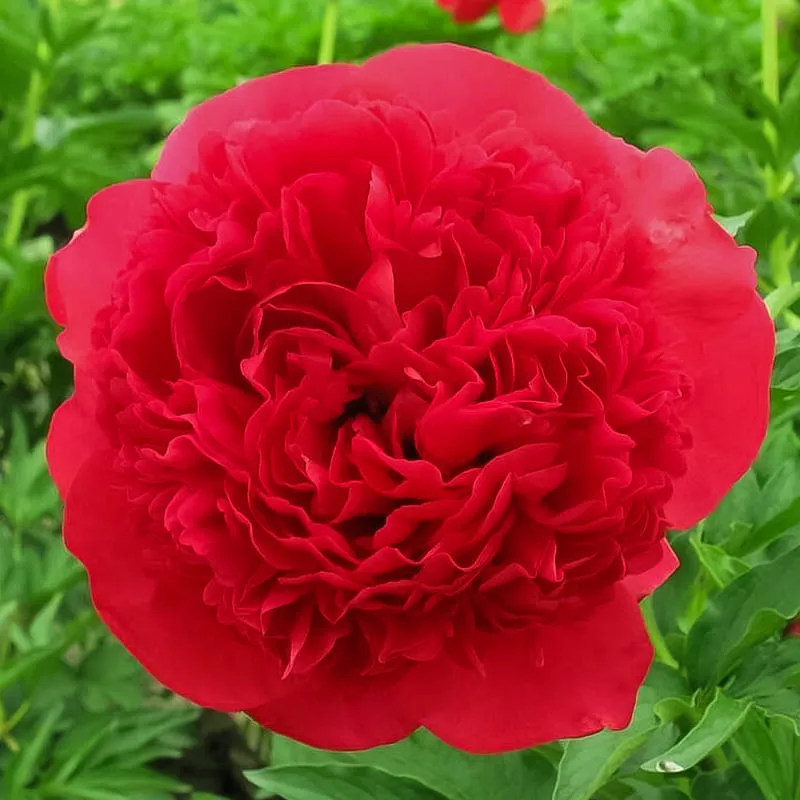
Choosing the Right Location
Selecting the right location is vital for the successful growth of Command Performance Peony. These plants require a spot that receives full sunlight for at least six hours a day. However, in regions with scorching summers, providing some afternoon shade can protect the plants from excessive heat stress.
Preparing the Soil
Command Performance Peonies thrive in well-drained, fertile soil. Prior to planting, it’s beneficial to amend the soil with organic matter such as compost to improve its structure and nutrient content. A slightly acidic to neutral pH (6.0 to 7.0) is ideal for optimal growth.
Planting Depth and Spacing
When planting Command Performance Peony, it’s crucial to position the root crown no more than 2 inches below the soil surface. Planting too deep can hinder blooming. Additionally, ensure a spacing of 3 to 4 feet between plants to allow adequate air circulation and prevent overcrowding.
Command Performance Peony Care

Light Requirements
Command Performance Peonies require ample sunlight to thrive. They perform best when exposed to full sun for at least six hours a day. In hotter climates, some afternoon shade can help protect the blooms from scorching. In my garden, I ensure that my peonies receive morning sun and are shaded from the intense afternoon rays by taller plants or structures.
Best Soil Mix
The ideal soil for Command Performance Peonies is well-drained and rich in organic matter. Heavy clay soils should be amended with compost or sand to improve drainage. I regularly add organic mulch around the base of my peonies to help retain moisture and enrich the soil as it breaks down.
Water Requirements
Peonies need consistent moisture, especially during their growing season. However, they do not tolerate waterlogged soil. I water my peonies deeply once a week, allowing the soil to dry out slightly between waterings. This practice helps to prevent root rot and promotes healthy growth.
Temperature and Humidity
Command Performance Peonies are hardy plants that can withstand a range of temperatures. They require a period of winter chill to bloom effectively, making them well-suited for temperate climates. While they can tolerate some humidity, overly humid conditions can lead to fungal diseases. Ensuring good air circulation around the plants helps mitigate this issue. In my experience, peonies perform best when they have a period of cold dormancy followed by a gradual warming in spring.
Fertilizer
Fertilizing peonies is crucial for their health and vigor. I apply a balanced, slow-release fertilizer in early spring when new growth begins to emerge. Additionally, I top-dress with compost each year to provide a steady supply of nutrients. Avoid over-fertilizing, as this can lead to lush foliage with few blooms.
Pruning
Pruning peonies involves removing spent blooms and cutting back the foliage in the fall. Deadheading spent flowers encourages the plant to focus energy on root development. In late autumn, after the first frost, I cut back the foliage to ground level to prevent overwintering pests and diseases.
Popular Varieties of Command Performance Peony
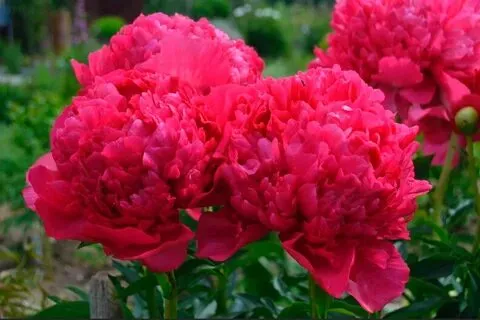
Command Performance Peony is a standout variety, but there are other notable cultivars within the Paeonia lactiflora species. Some popular varieties include:
- Sarah Bernhardt: Known for its large, fragrant pink blooms.
- Karl Rosenfield: Features deep red, double blooms with a striking appearance.
- Festiva Maxima: White blooms with crimson flecks, highly fragrant.
- Duchesse de Nemours: Elegant white flowers with a creamy center.
Grow and Care for Cherry Hill Peony
Propagating Command Performance Peony
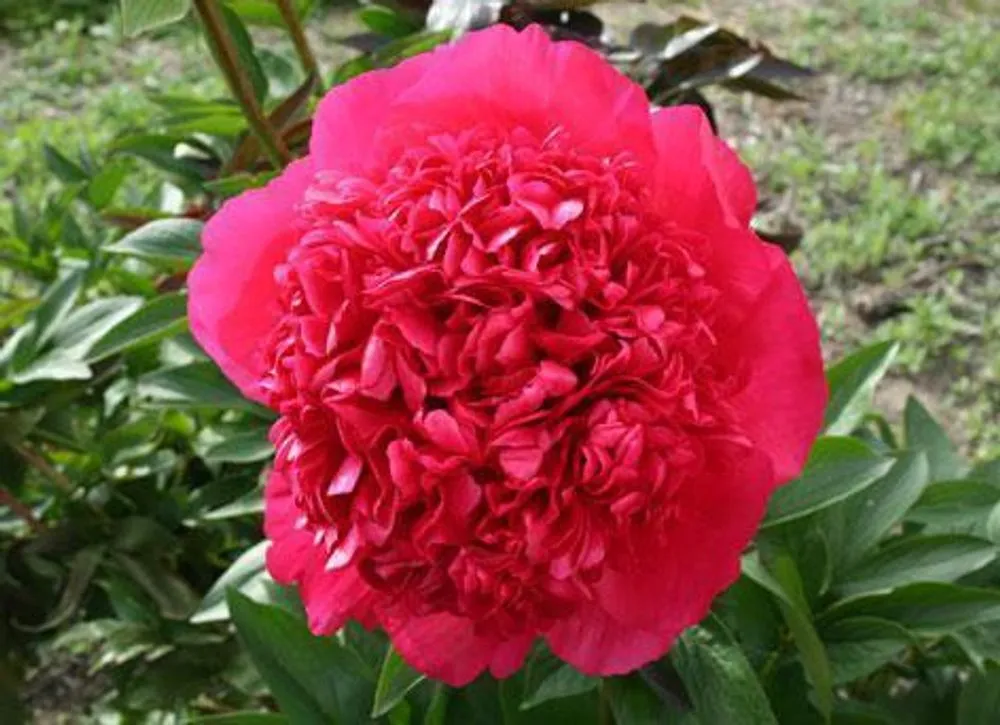
The Best Time to Divide
Fall is the ideal time to divide peonies, generally between late September and October. During this period, the plant is entering dormancy and focusing energy on its root system, making it less susceptible to stress from division.
Dividing Your Command Performance Peony
Here’s a step-by-step guide to dividing your Command Performance peony:
- Dig it Up: Carefully dig around the base of the peony plant with a shovel, creating a wide circle. Once loose, gently lift the plant from the soil.
- Clean and Separate: Brush away excess soil from the roots. Using a sharp knife or pruner, carefully divide the plant into sections, each containing 2-3 healthy eyes and a good portion of roots.
- Replanting: Dig individual planting holes for each division, ensuring they are deep enough to accommodate the roots without crowding the eyes. Amend the soil with compost for added nutrients. Replant the divisions, making sure the eyes are no more than 1-2 inches below the soil surface.
- Watering and Care: Water your newly planted divisions thoroughly. Throughout the fall and winter, provide occasional water if there’s a lack of rainfall. In spring, you should see new growth emerge from the eyes.
Additional Tips:
- Select a mature peony plant (at least 3-5 years old) for division.
- Disinfect your cutting tools before dividing to prevent the spread of disease.
- When replanting, avoid applying fertilizer as the compost provides sufficient nutrients for establishment.
Potting and Repotting Command Performance Peony
Command Performance Peonies can be grown in containers, although they prefer being in the ground. Choose a large container with good drainage, and use a high-quality potting mix. Repotting should be done every few years in early spring to refresh the soil and provide more space for root growth.
Common Pests & Plant Diseases
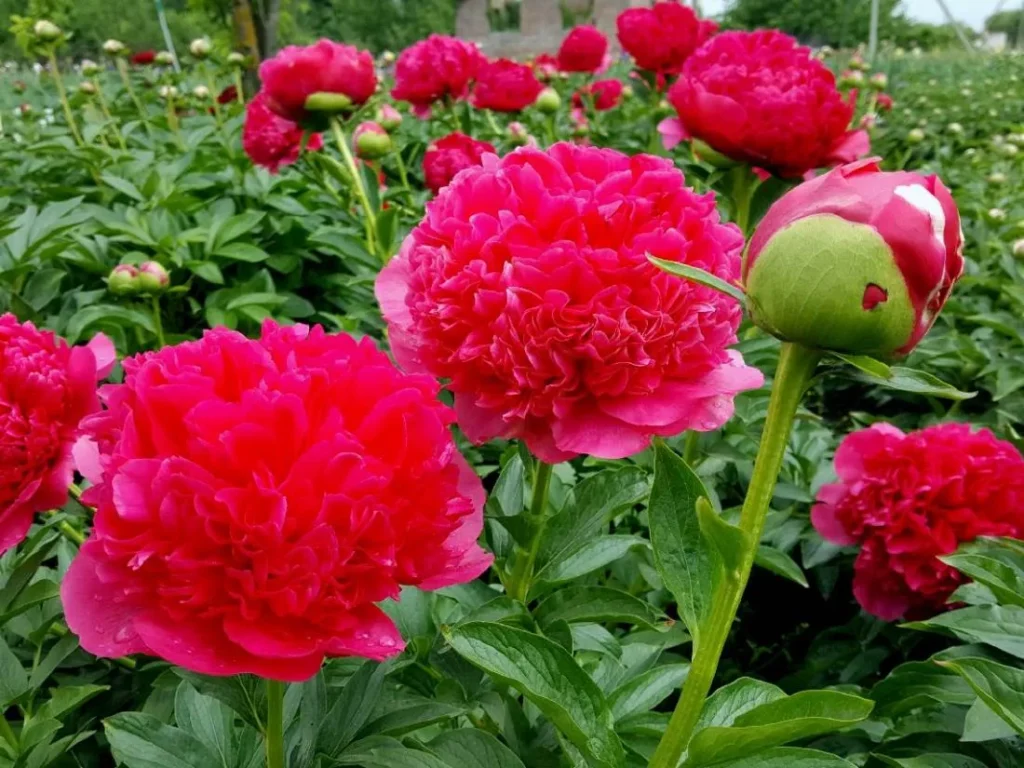
Command Performance Peonies are relatively resistant to pests, but they can occasionally be affected by:
- Aphids: These small insects can be controlled with insecticidal soap or neem oil.
- Botrytis Blight: A fungal disease that causes gray mold on flowers and stems. Improve air circulation and remove affected parts.
- Powdery Mildew: White, powdery fungus on leaves. Use fungicidal sprays and ensure good air circulation.
Troubleshooting Common Problems
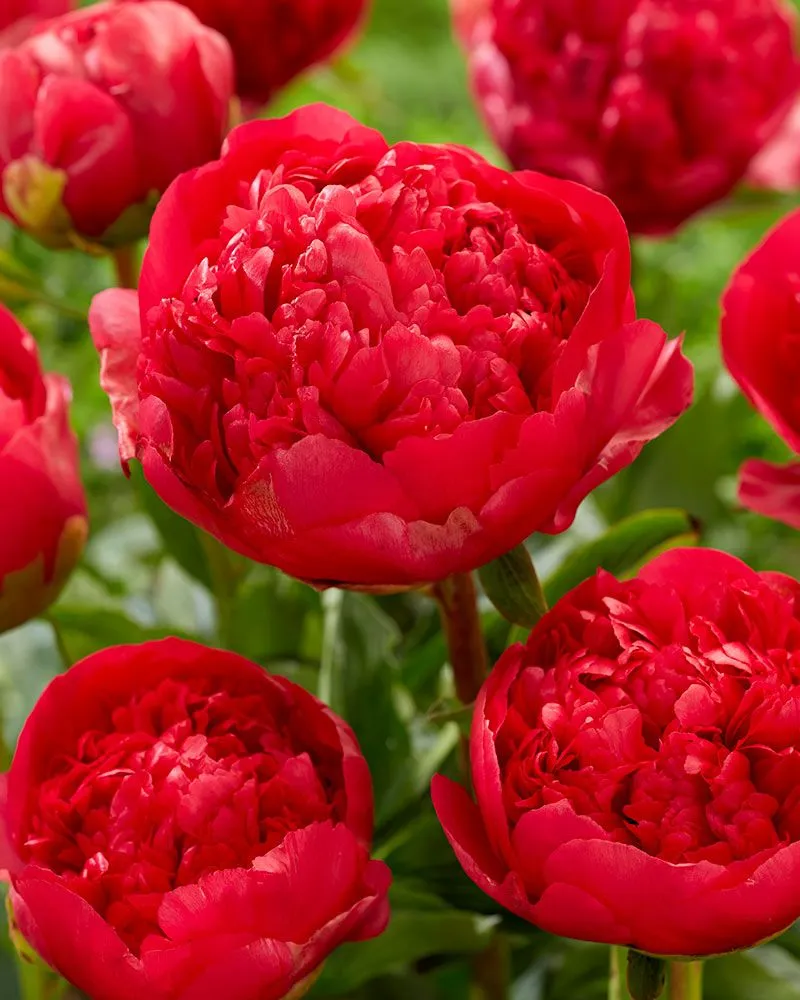
Poor Flowering
If your Command Performance Peony is not flowering well, it could be due to several factors such as planting depth, insufficient sunlight, or over-fertilization. Ensure the root crown is at the correct depth, provide adequate sunlight, and avoid excessive nitrogen fertilizers.
Yellowing Leaves
Yellowing leaves can be a sign of overwatering, poor drainage, or nutrient deficiencies. Ensure the soil is well-drained and not waterlogged. Test the soil and amend it if necessary to address nutrient imbalances.
Stunted Growth
Stunted growth can result from poor soil conditions, inadequate watering, or pest infestations. Improve soil quality, maintain consistent watering, and monitor for pests.
Fungal Infections
Fungal infections like botrytis blight and powdery mildew can be managed by ensuring good air circulation, avoiding overhead watering, and using appropriate fungicidal treatments.
Seasonal Care Tips
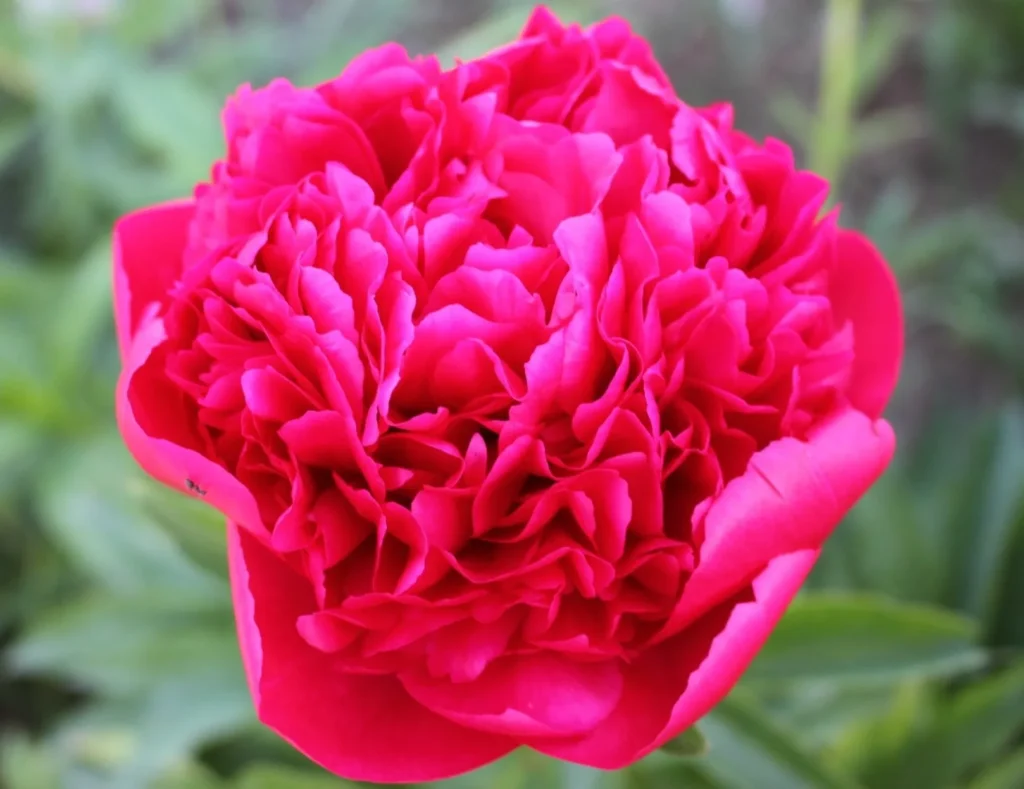
Spring
- Remove winter mulch.
- Fertilize with a balanced, slow-release fertilizer.
- Ensure adequate watering as new growth begins.
Summer
- Provide consistent moisture.
- Mulch to retain soil moisture and regulate temperature.
- Protect from extreme heat with partial shade if necessary.
Fall
- Remove spent blooms and cut back foliage.
- Divide and replant if necessary.
- Apply a layer of mulch to protect roots during winter.
Winter
- Ensure plants are well-mulched for winter protection.
- Avoid excessive watering to prevent root rot.
- Monitor for signs of pests and diseases.
Conclusion
Growing and caring for Command Performance Peony can be a rewarding experience for gardeners of all skill levels. With proper planting, consistent care, and attention to seasonal needs, these stunning peonies can thrive and bring vibrant beauty to your garden year after year. Whether you are an experienced gardener or a novice, following these guidelines will help you enjoy the full splendor of Command Performance Peonies.
